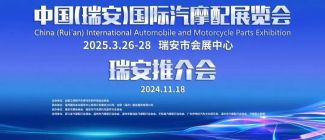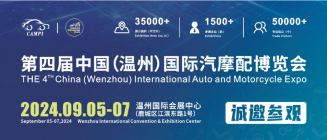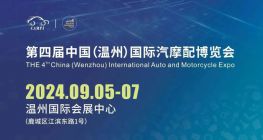China is not only leading the electric mobility revolution, but also reshaping the global automotive industry. What are the successful factors behind this transformation? What can we learn from it again?
policy
The foundation of China's electrification transformation comes from long-term policy support from the government. For over 20 years, the Chinese government has continuously established a complete policy system for the development of new energy vehicles, which is also a significant advantage of China compared to other markets.
China's policies balance incentives and constraints, including providing generous financial subsidies to consumers of new energy vehicles, reducing the purchase cost of each vehicle by thousands of euros, as well as implementing restrictions on fuel vehicles based on license plate numbers (such as Beijing's one day per week restriction policy on fuel vehicles as early as 2008).
The sustained and stable financial support from the country has become the foundation for consumers to trust the transformation towards electrification.
Six factors contributing to China's successful electrification transformation
product diversity
Both pure electric vehicles (BEVs), plug-in hybrid electric vehicles (PHEVs), and extended range electric vehicles (EREVs) can equally enjoy national subsidies.
Pure electric vehicles are more favored by urban residents, while consumers living in rural areas (accounting for over 40%) are more inclined towards hybrid models, including extended range electric vehicles.
Extended range electric vehicles are equipped with small fuel generators to charge the battery, which can achieve a range of over 1000 kilometers on a single charge.
By supporting both hybrid and pure electric vehicles, China has not only increased the attractiveness of new energy vehicles to residents outside of big cities, but also attracted a user group that is not yet ready to purchase pure electric vehicles to choose new energy travel.
infrastructure
As a key factor in promoting the popularity of electric vehicle travel, charging infrastructure has been included in the overall plan since the policy was launched.
China has built the world's largest public charging network, with a total of 3.6 million charging stations (accounting for 70% of the global total!). This achievement cannot be achieved without the effective collaboration of multiple forces such as the government, car companies, and startups.
The vast charging network extends from super large cities to highways, and then to small towns, making electric vehicles more convenient for both urban commuting and long-distance travel.
The widely deployed fast charging facilities effectively alleviate consumers' range anxiety.
Vehicle cost
In addition to car purchase subsidies and trade in subsidies, economies of scale and electricity price advantages have also significantly reduced the cost of electric vehicles.
In China, using public charging stations to supplement energy costs only about 1.5 euros per 100 kilometers. In Germany, this number is about 9 euros, which is six times that of China. At the same time, the average energy consumption cost of fuel vehicles in Germany is about 11 euros per 100 kilometers, while in China it is 6.5 euros, which is more than four times the cost of charging.
Therefore, in China, new energy vehicles not only have an advantage in purchase costs, but also have much lower daily operating costs than fuel vehicles. This also enhances consumers' confidence in the electrification transformation and encourages more people to choose electric transportation.
innovation driven
With strong support from clear policy frameworks, Chinese automotive companies have seized the new growth opportunities brought by new energy vehicles and increased investment in electrification research and development.
Under the comprehensive support of China's new energy industry ecosystem, Chinese car companies can achieve rapid commercialization of innovative achievements in electric vehicles and apply rich technologies to the vast and diverse local market.
This is not only reflected in the hardware aspect (especially battery and electrical architecture), but more importantly, in the software field, Chinese enterprises are developing rapidly.
This new energy vehicle ecosystem provides strong support for the rapid advancement of technology and the widespread application of innovation.
consumer
The average age of new car consumers in China is only 34 years old, while in Europe, new car customers are on average 20 years older than in China.
Young customers are passionate about technology and are more willing to use cutting-edge innovative technologies. For example, in Europe, there are still a large number of users who prefer traditional physical buttons, while Chinese consumers prefer interactive methods such as voice control.
This enthusiasm for innovation has fundamentally led Chinese consumers to have a more open attitude towards electric vehicles.
What insights do these experiences have for Europe?
Major long-term industrial transformation cannot be achieved without stable policy support! The same applies to the development of electrification. Only by providing long-term and reliable financial support in all aspects can we truly establish public confidence in future electric mobility, which is essential.
The most important of these is affordable electricity prices, which are the most critical factor driving the development of electric mobility.
In addition, providing financial support for both pure electric and hybrid models simultaneously will also play an important role in the transitional stage of transformation, helping some user groups who are limited by their own conditions or still have doubts about electric travel gradually move towards the era of electric travel.
AMS2024 Exhibition Guide | Comprehensive Exhibition Guide, Don't Miss the Exciting Events Online and Offline
Notice on Holding the Rui'an Promotion Conference for the 2025 China (Rui'an) International Automobile and Motorcycle Parts Exhibition
On September 5th, we invite you to join us at the Wenzhou Auto Parts Exhibition on a journey to trace the origin of the Auto Parts City, as per the invitation from the purchaser!
Hot Booking | AAPEX 2024- Professional Exhibition Channel for Entering the North American Auto Parts Market
The wind is just right, Qianchuan Hui! Looking forward to working with you at the 2024 Wenzhou Auto Parts Exhibition and composing a new chapter!
Live up to Shaohua | Wenzhou Auto Parts Exhibition, these wonderful moments are worth remembering!
Free support line!
Email Support!
Working Days/Hours!





